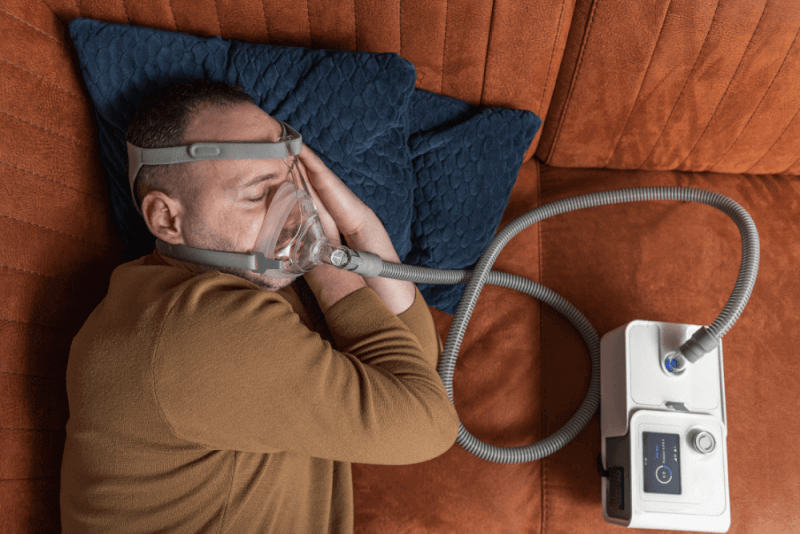What is neurology?
Neurology is the field of medicine that deals primarily with the physiology and diseases of the nervous system. This system includes the functioning of the brain, spinal cord, brain stem, peripheral nervous system and muscles. The field of neurology, which deals with diseases that occur in any of them and do not require surgical intervention, is divided into two as adult and pediatric neurology. Neurology specialists are intensively involved in outpatient and inpatient services as well as the follow-up of patients receiving intensive care mountain treatment.
What are the conditions related to neurology?
Neurologists work with many different diseases. Tests such as BERA, VEP, SSEP, EEG and EMG are used to diagnose these diseases. Neurological diseases can be diagnosed with many different tests and imaging systems.
Neurology deals with diseases such as epilepsy, headaches, Alzheimer's, sleep disorders and stroke. Since the nervous system controls all body functions, disorders in the nervous system can affect every aspect of patients' lives. For this reason, it is critical to diagnose and start treatment of diseases in the field of neurology as soon as possible. A multidisciplinary approach is adopted in the treatment of many diseases in the field of neurology. Along with neurology, the medical units that work most frequently with neurology include physicians dealing with the endocrine system, the immune system, the digestive system and hormones.
What are the diseases that neurologists are interested in?
The neurology department deals with many different diseases. However, the most common diseases in the society and therefore the most common groups of diseases that most frequently consult neurologists include the following.
Epilepsy
Epilepsy, also called epilepsy, is caused by abnormal changes in the brain. Overstimulation of the nerve cells in the brain causes impaired brain function due to water and therefore abnormal rhythmic contractions in the body. Epilepsy, which can be seen in all age groups, is caused by long-term insomnia, high fever, infection and head trauma.
Headache
The head region is home to structures that are highly sensitive to pain. Structures such as arteries and veins, cranial nerves, scalp, superficial nerves, neck muscles, eardrum, external auditory canal nerves, eye balls and surrounding structures, teeth, salivary glands, carotid artery and jaw joint are highly sensitive to pain. Therefore, many different causes have to be taken into account when it comes to headaches.
Since the causes of headache are different, the shape and intensity of the pain also vary. Headaches can be throbbing and sharp, or they can be mild or intermittent. Headache, which is extremely common in the society, is divided into 2 main groups. The first of these are headaches that are not due to any cause and are classified as primary, while the second group is called secondary headaches, which are headaches due to a specific disease. Migraine and tension-type headache are seen in a significant proportion of patients admitted to neurology.
Dementia
Dementia, also commonly referred to as dementia, is an umbrella term that covers many different diseases. Dementia, which occurs due to the deterioration of the functions in the brain, can be seen in all age groups. Although dementia can occur in any age group, the first symptoms are usually seen at a young age. Long after the most characteristic symptom, forgetfulness, starts to appear, other symptoms begin to appear. The progression of symptoms caused by dementia can lead to patients living their daily lives on their own.
There are many different causes of dementia, but basically it is the damage to brain cells due to a cause. Since there are different types of dementia and the symptoms are very similar, an accurate diagnosis is crucial for successful treatment. The key to a correct diagnosis is the experience of neurologists who specialize in this field.
Sleep disorders
Humans spend approximately one third of their lives asleep. Sleep is one of the physiological needs for the brain to rest properly. For this reason, sleep problems can trigger many problems. These problems cause a lack of motivation and attention, significantly reducing patients' quality of life. Problems such as restless leg syndrome and sleep respiratory arrest, which are the most common causes of sleep disorders, are diagnosed by neurologists.
Sleep apnea, a sleep disorder, causes various health problems such as diabetes, hypertension, obesity and stroke. It is important to perform a sleep test for a definitive diagnosis of sleep disorders. During this test, data such as the depth of sleep, blood oxygen levels, heart and respiratory activity, involuntary leg movements and snoring are recorded. If the test reveals the presence of sleep apnea, various treatment methods are applied.
Demyelinating diseases
Demyelinating diseases are diseases in which the central nervous system and peripheral nervous system are affected. The best known of these diseases is multiple sclerosis. MS, which usually occurs between the ages of 20 and 40, is defined as an inflammatory disease of the spinal cord involving the central nervous system. In addition, although it is not common in the society, device disease is another disease that shows immune system involvement and is among the demyelinating diseases. Demyelinating diseases are those that develop due to the loss of the myelin sheath and thus cause various damages to the function of nerve cells. The myelin sheath is a tissue of lipids and proteins that increases the rate of excitation of nerve cells in both the central and peripheral nervous system and is thus vital for the continued functioning of the nervous system. When this tissue is damaged, the diseases seen vary according to the function of the affected nerve cell.
Muscle diseases
Muscles perform many tasks, including not only movement but also bowel movements, blinking and heart contraction. Muscle diseases called myopathies affect a large part of the muscles. Myopathy diseases can disrupt the structure or functioning of muscle cells. Myopathy diseases, which can be seen in all age groups, cause serious health problems as well as disrupting the comfort of life of patients.
Brain vascular diseases
Cerebrovascular diseases, which the neurology department deals with, are usually caused by a hemorrhage or blockage in the brain. These diseases caused by vascular blockages in the brain include the following.
- Stroke
- Paralysis
- Loss of strength dizziness
- Loss of speech
- Loss of consciousness
- Visual disturbances
Diseases caused by blocked blood vessels are caused by the lack of blood supply to certain areas and the death of tissues in these areas due to the blockage. In cerebral hemorrhages, which are usually seen due to blood pressure, clinical treatment is sufficient in cases that do not require cardiac or respiratory support without loss of consciousness.
Headache
Headache, which is one of the most common complaints in the society, is seen due to many different reasons. The medical unit authorized to diagnose the headache and start the necessary treatment is neurology.
Movement disorders
Within the group of diseases called movement disorders, Parkinson's disease is the most common disease, but there are also diseases such as restless leg syndrome, dystonia, dyskinesias and essential tremor. Movement disorders are characterized by involuntary movements, tremors in the hands, gait disturbances and loss of facial expression.
In which cases should you consult a neurologist?
The reasons for seeking help in the neurology department can be very different. However, the most common symptoms in patients applying to this department include the following.
- Headache
- Tremor
- Dizziness
- Involuntary contraction
- Involuntary movements loss of balance feeling of emptying in the legs
- Fainting
- Speech disorders
- Forgetfulness
- Gait disorders
- Plunge
- Numbness, weakness and loss of sensation in the limbs
- Behavior changes
- Double vision
- Facial deformities and numbness
- Difficulty swallowing
- Sleep disorders
- Sensory impairment
- Paralysis
- Ischemic attacks





















